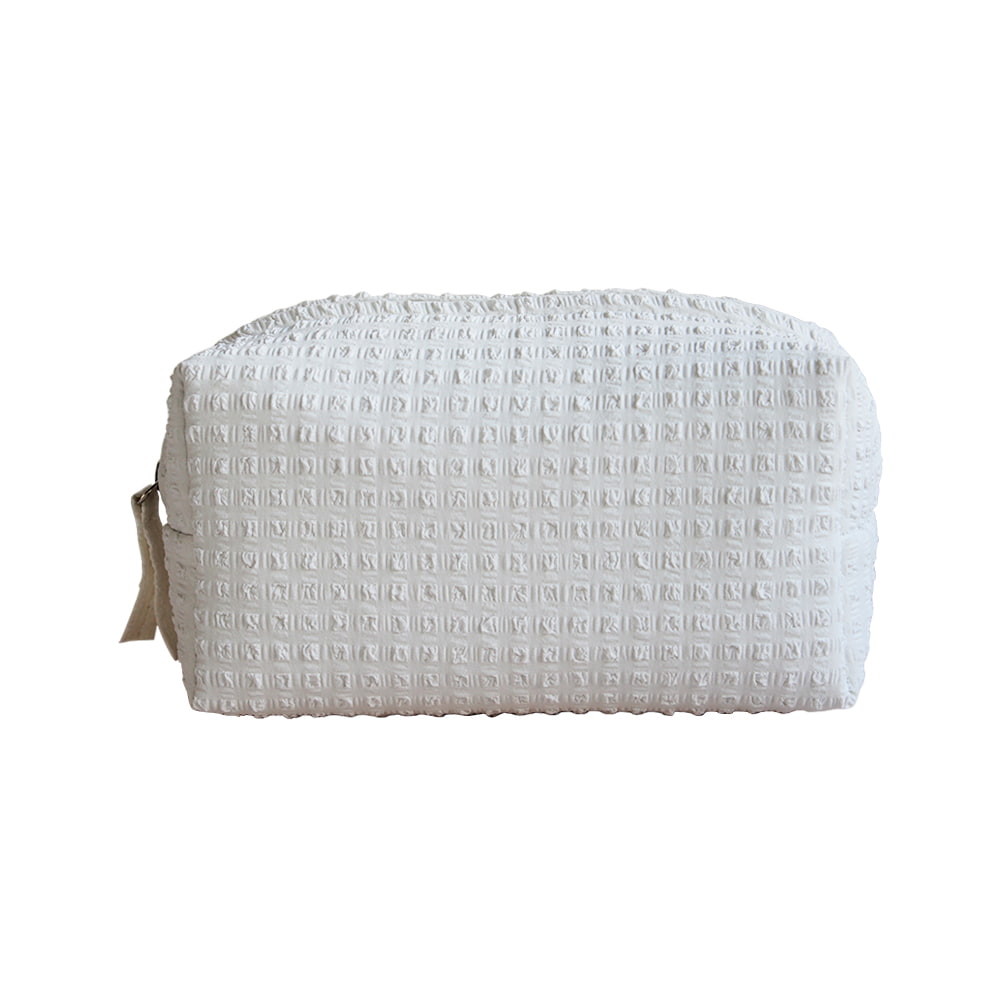The custom makeup bag has evolved from a simple utilitarian pouch to a carefully considered accessory, reflecting both personal style and practical needs for cosmetics organization. For individuals, brands, and event planners considering a custom order, the process raises several important questions. These inquiries typically center on the selection of materials, the scope of customization, practical considerations of size and functionality, and the logistical aspects of ordering and production. Addressing these questions in a systematic manner can clarify the decision-making process and a more satisfactory end product.

I. Material and Construction Inquiries
A primary area of questioning involves the physical composition of the bags, as materials directly influence durability, aesthetics, and cost.
What materials are commonly available? Common options include polyester, nylon, canvas, and vegan leather. Polyester is a frequent choice due to its durability, wide range of color and print options, and resistance to stains. Nylon offers a lightweight and water-resistant quality. Canvas provides a sturdy, textured feel, while vegan leather presents a synthetic alternative with the appearance of genuine leather. The selection depends on the desired balance between durability, weight, texture, and price point.
How is the interior constructed? The interior lining is a critical feature. Quilted lining is often used for its protective cushioning, which helps shield delicate cosmetic items. A plastic vinyl lining, such as PVC or PEVA, is common for its wipe-clean surface, containing spills from lotions or oils. Some bags feature a simple, non-quilted fabric lining, which is a cost-effective option for dry products. The choice hinges on the types of products the bag is intended to carry.
What are the different types of zippers and closures? Zipper quality is a determinant of longevity. Metal zippers are generally more durable but can be heavier, while plastic coil zippers are lightweight and resistant to rust. The size of the zipper teeth and the design of the zipper pull are also customizable elements. Some bags may feature magnetic snaps or drawstrings as alternative closures, though zippers remain the standard for security.
II. Customization and Design Options
The degree to which a bag can be personalized is a central concern for those looking to create a unique product.
What printing and branding techniques are used? Common methods include screen printing, which applies ink directly onto the fabric and is suitable for simple, bold designs; heat transfer, which allows for full-color, complex graphics; and embroidery, which creates a textured, premium finish by stitching the design into the material. Embroidery is often considered more durable but may have higher setup costs and is less suited for highly detailed photographic images.
To what extent can the bag's shape and size be modified? While many manufacturers work from a set of standard templates, modifications are often possible. This can include adjusting the length, width, and gusset depth to create a specific volume. More complex customizations might involve unique shapes, asymmetrical designs, or the addition of external pockets, though such changes typically increase the unit cost and require larger order quantities.
Can internal organization be customized? The internal layout is a key functional aspect. Options range from a single, open compartment to bags with elastic loops for brushes, removable dividers, mesh pockets, or zip-around compartments. Defining the intended contents—such as brushes, palettes, or bottles—helps determine the effective internal configuration.
III. Practical Considerations of Size and Functionality
Beyond aesthetics, questions arise regarding how the bag will perform in daily use.
What size is appropriate for different uses? This question requires considering the user's routine. A small, compact bag is suitable for holding daily essentials and touch-up items. A medium-sized bag is often used for general daily makeup kits. A large, train-case style bag is designed for professional makeup artists or individuals with extensive collections, and it often includes more robust internal organization.
How does one balance portability with capacity? There is a direct trade-off between the size of a bag and its ease of transport. A bag intended for travel needs to comply with airline carry-on liquid regulations and be compact enough to pack easily. A bag for home use prioritizes capacity over portability. The intended context of use guides this balance.
What features enhance usability? Practical features include a waterproof or easy-to-clean lining, sturdy handles for carrying, a secure closure mechanism, and a structured shape that prevents the bag from collapsing when empty. For travel, a bag with a TSA-approved lock or a transparent compartment can be beneficial.
The company covers an area of 1500 square meters and specializes in producing various types of makeup bags, jewelry bags, children's bags, and wash bags, with a monthly output of about 100000 bags.
 We Are Here
We Are HereAddress: 6th Floor, No. 2 Gantang West Road, Huanglinshan Industrial Zone, Yiting Town, Yiwu City, Jinhua City, Zhejiang Province, China
 Contact Us
Contact UsPhone: +86-13857970558

sales1@xibodan.com
sales2@xibodan.com
sales6@xibodan.com
If you have any requirements, please click on "contact" to leave a message.

 English
English русский
русский Español
Español